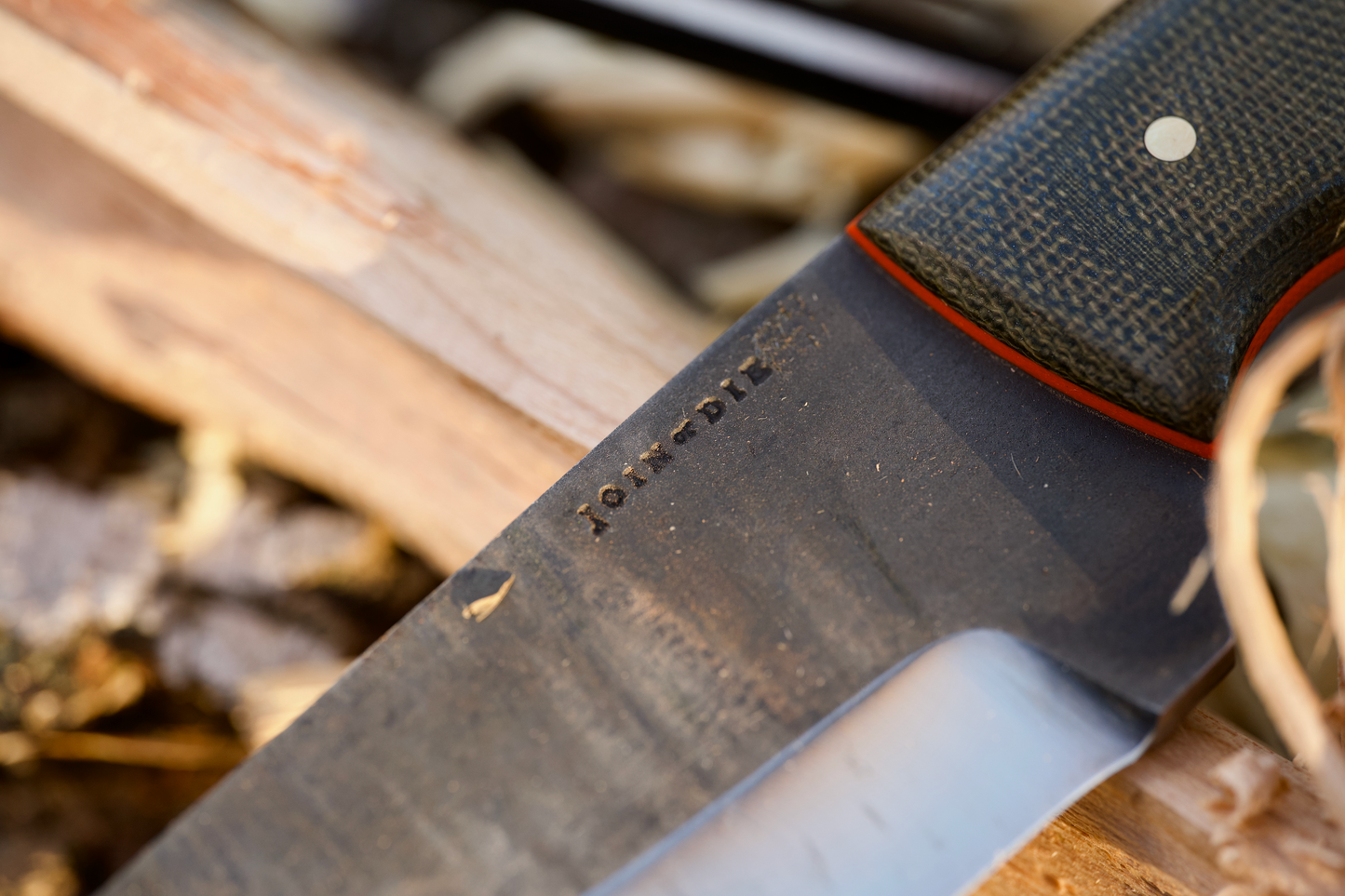
Over my years of making knives I have used and designed many knives with many geometries. I have noticed that many elements of knife design that are played up as most important tend to be less impactful than advertised. Steel alloy for instance does make a difference, but not as much as proper heat treat or geometry. When I use a knife that doesn't cut well or hold it's edge very long, I look to the bevel geometry first these days. My tendency used to always be to consider the steel alloy or hardness but often it's confusing if the knife is clearly very hard but still not holding its edge long.
Some knives just cut and stay sharp better than others and I think that geometry is the key. Maybe it's the golden mean or the Pythagorean theorem but something about the combination of bevel angle, thickness and edge arc either work together or fight against each other. If a blade bevel is left too thick behind the edge, the angle will be too steep and the knife will bog down in material, plus with a steep angle the edge just won't feel as sharp. The lower the angle, the finer the cutting edge will be.
Now you may think that this means that all knives should have the lowest possible angle but if you did, you would be wrong. Low angle sharpness comes with the compromise of edge toughness. The thinner the edge, the more delicate it will be. Although this is true, many knives that are intended to be durable are ground too thick and could stand to be more thin. If the steel is heat treated well and the alloy is correct for the use case, a secondary bevel can be very thin, just slightly thicker than a zero grind.
A zero grind refers to a bevel that is ground to sharpness with no secondary bevel. This is very rare and undesirable as it requires the whole side of the knife to be thinned every time it needs sharpening. One exception is a scandi grind on a bushcraft knife. Although the knife is ground to a zero edge, the bevel is short and the knife is very thick so the angle widens quickly behind the edge - giving it as much durability as possible. If a knife is designed well, it can be ground to a zero edge and then very lightly dulled back to blunt before resharpening. This removes any damaged or uneven steel on the edge left over from the grinding process but also gives the smallest sharpening bevel possible. The compound geometry of the primary and secondary bevels gives the knife edge the durability it needs while keeping it as sharp as possible.